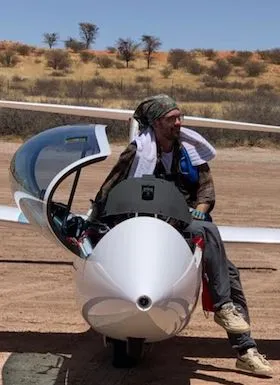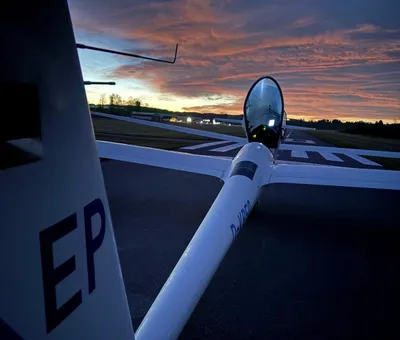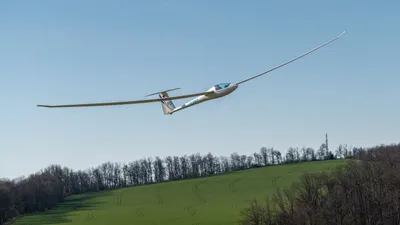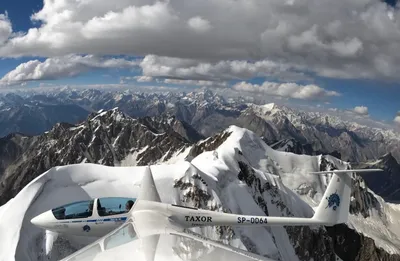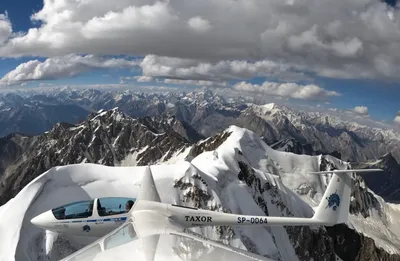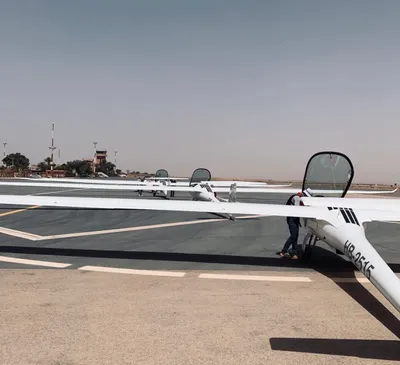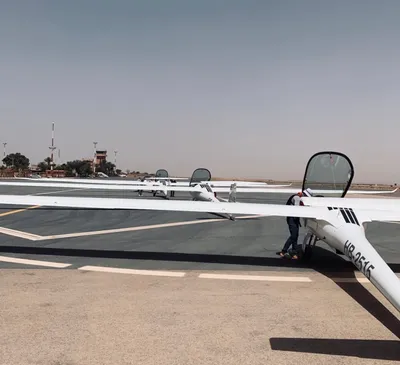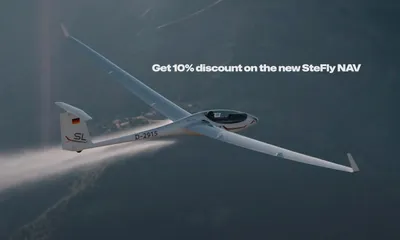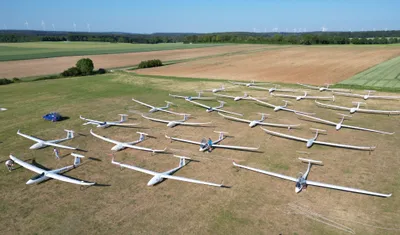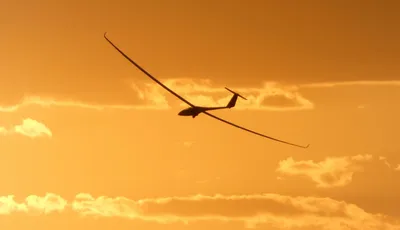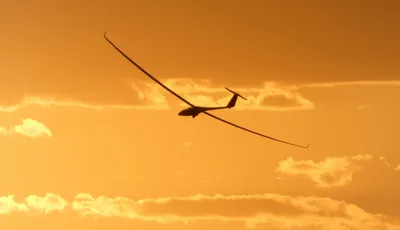Segelfliegen bei Nacht - Das Comeback nach über einem halben Jahrhundert

Schaut man zurück in die Vergangenheit, gab es bereits eine Zeit in der waghalsige Piloten Rekorde im Dauersegelflug aufstellten. Lange Stunden ging es damals entlang der Dünen an den Küsten. Doch es passierten Unfälle, die Piloten schliefen während des Fluges ein. Es war schlicht und einfach zu gefährlich und diese Art der Segelfliegerei wurde bald wieder eingestellt.
Die Rekorde im Dauersegelflug sind mittlerweile über ein halbes Jahrhundert her und in der Technik hat sich viel getan. In einigen Ländern ist das Segelfliegen bei Nacht legal. Die Frage liegt Nahe: Wer wagt es als erstes in die Fußstapfen der damaligen Rekordjäger zu treten?
Eines vorne Weg, Rekorde werden hier zunächst nicht geflogen. Die FAI erkennt Flüge nicht an, die vor Tagesanbruch beginnen oder nach Tagesende enden. Doch das hält nicht davon ab Grenzen auszuloten und neue Maßstäbe in der freien Wertung zu setzen.
Auf den Weg zu dem 3000km
Im April diesen Jahres wurden wir zum ersten Mal von einem speziellen Upload aus dem US-Amerikanischen Minden in Nevada überrascht. Gordon Boettger machte einen Testflug in der Nacht mit seinem Arcus J, einen eigenstartfähigen Doppelsitzer mit Jet Triebwerk.
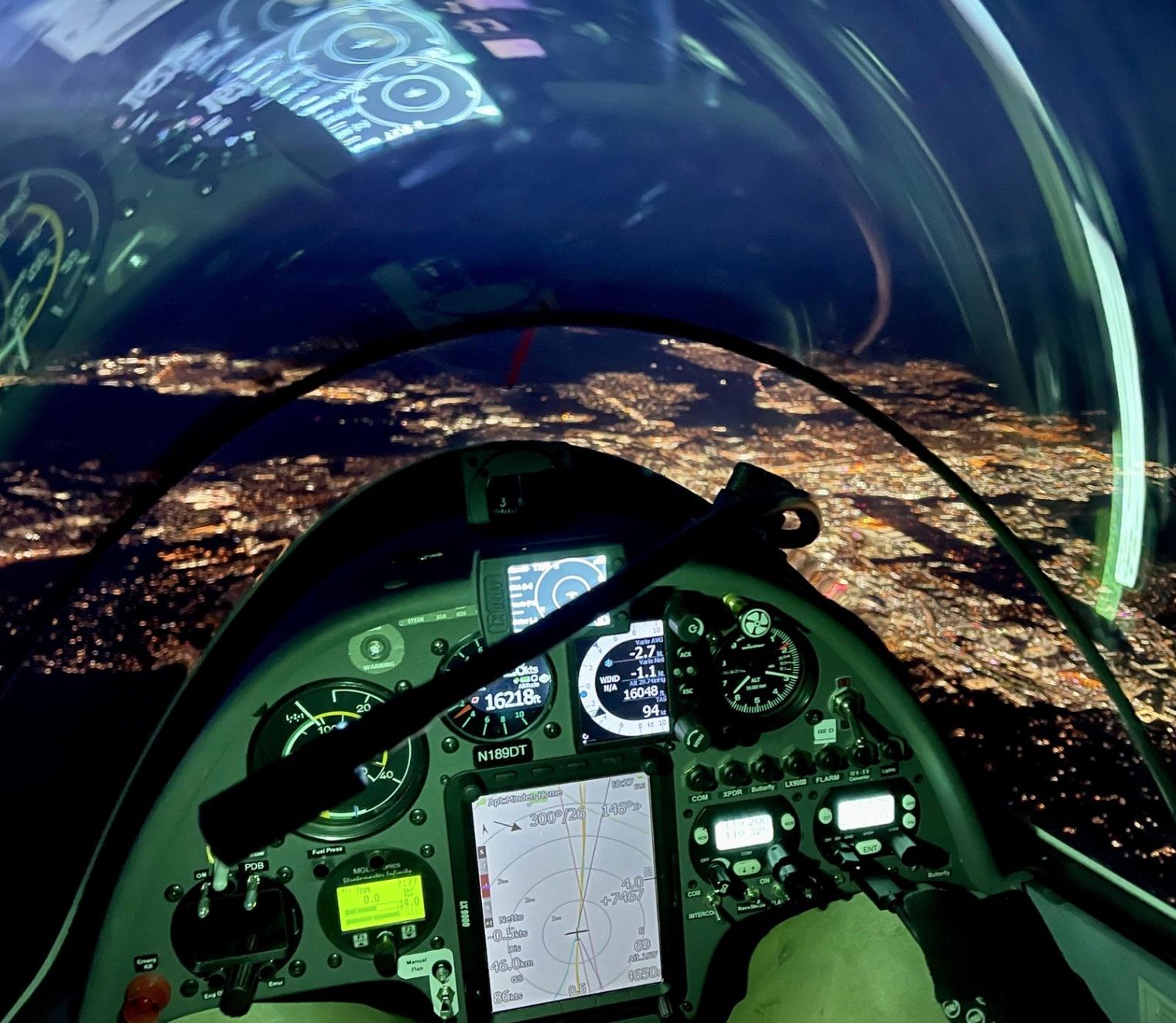
Gordon flog dabei mit einem Nachtsichtgerät und einer Instrumentierung, die für das Fliegen mit Nachtsichtgerät geeignet ist. Auch hier kamen bereits einige Kilometer heraus, auch wenn es sich im Prinzip und einen Lokalflug, im ständigen Gleitbereich von Minden handelte. Schon hier war das Aufsehen groß und der Flug wurde fleißig kommentiert. Wir sind ganz klar einer Meinung mit Thomas Wolf:
"This is really "next level"!"
Auch Gordon war eupheurisch nach dem Flug und man konnte schon erahnen, dass dies erst der Anfang einer spannende Reise sein wird:
"Thanks for the great comments. I'm hoping this will lead to some really fun flights that I can share. Sorry about the dark pictures 😂 and lack of scenery on this flight."
Natürlich kamen auch schon erste Fragen auf, wie von Michael Sohn:
"What is about position lights ? How did you manage it ?"
Auch hier gab Gordon direkt Auskunft. Der Acus ist mit Positionslichtern ausgestattet und die Haube ist mit einem zusätzlichen Plexiglas versehen, die eine Vereisung innerhalb des Cockpits verhindert. Wir sind sehr erfreut, wie gut die Kommentarspalte mittlerweile verwendet wird und für mehr transparenz im Segelflug führt!
Gute zwei Wochen später dann die nächste Sensation. Gordon Boettger flog zusammen mit Brad Jackson. Die Wellenbedingungen an dem Tag waren nicht ideal. Doch sie streckten den Flug bis in die Nacht und konnten so am Ende doch die 2000er Marke knacken.
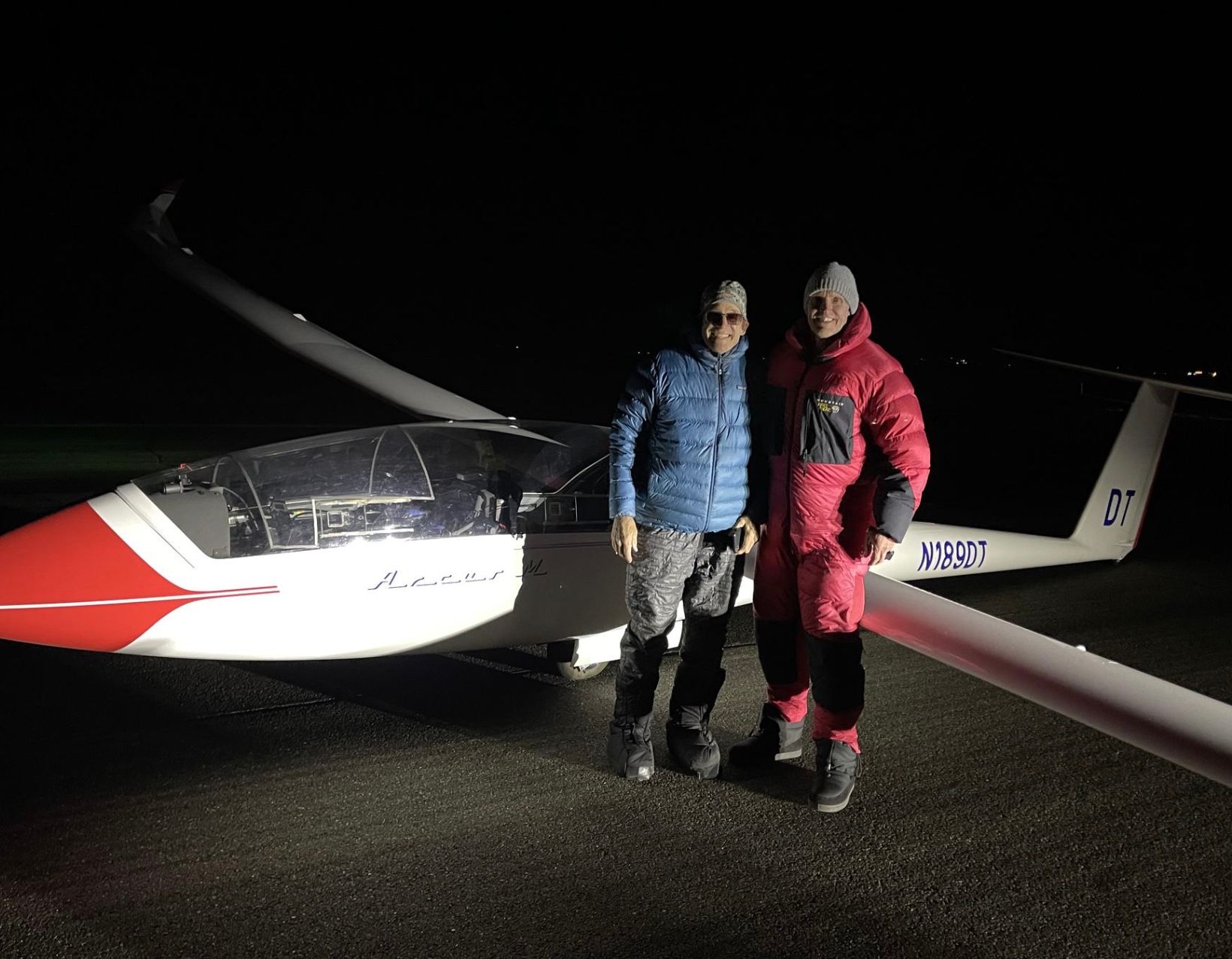
Unser Teammitglied Simon van den Eijkel hatte es richtig erkannt:
"I calculated that a 3000 is possible in that area. Question is, when will it happen?"
Neue Grenzen setzen - Ein historischer Tag des Segelflugs
Am 19. Juni 2023 bekamen wir von Gordon die Nachricht:
"I'm going to launch at midnight tonight and plan for a 2500 km plus flight. NVG time baby!"
Schon da war uns klar, heute könnte der Tag kommen an dem die jemals größte Kilometerdistanz mit einem Segelflugzeug überwunden wird.
Dieses mal war die Taktik eine andere. Im Gegensatz zum vorherigen Flug startete dieser in der Nacht, um das Wellenfenster perfekt nutzen zu können. Gordon flog an diesem Tag zusammen mit Bruce Campbell und nach 17, 5 Stunden berührten sie nach 3058 km erneut den Boden - ein historischer Tag im Segelflug!
Im Anschluss der erste Schreck, der Flug wurde nicht hochgeladen, gab es Probleme mit dem Logger? Doch nach kurzer Rücksprache die Erleichterung. Gordon und Bruce hatten ihren Flug nicht in Minden, sondern weiter nördlich in Cedarville beendet, um die 3000 km sicher voll machen zu können. Dort war schlicht und einfach das Internet zu schlecht um den Flug hochzuladen.
Dankenswerterweise hat Gordon auch einen ausführlich Kommentar verfasst, nachdem er sich ordentlich ausgeschlafen hatte. Eines vorne Weg: die 3000 km waren alles andere als geschenkt und gerade die letzten Stunden erforderten eine menge Konzentration um die magische Zahl zu erreichen - das nach über 15 Stunden Flug, eine Wahnsinns Leistung. Lehnt euch zurück und seid hautnah mit dabei:
"The plan was to takeoff sometime after midnight and make a cross country through most of the night and practice with the NVG's and see how cold it would be at high altitude at night. The forecast was for good wave throughout the night and getting very weak by 1400L back in the Minden area. My expectations were low. I asked my copilot if he was interested in joining me. Takeoff was at 0230L in windy conditions on a very dark night with night vision goggles (NVG's). I had a normal climb in "blue" wave and got my IFR clearance and went south using the night vision goggles. It was absolutely magical and I felt like I was in an IMAX movie as we watched the Milky Way and shooting stars continuously through the NVG's. UNFORGETTABLE! Skysight showed good wave in the Owens Valley to the south. The difficulty with the wave in our area is that normally the energy runs out to the south near Inyokern along the southern end of the Sierra and to the north near Susanville there is too much moisture and the wave weakens. In Argentina it is possible to fly much further to the south and north than along the Sierra. When arriving in the Joshua military airspace I was told to descend below FL180 before entering the airspace because the Joshua controllers did not open the airspace until 0500L. That was a surprise. When they arrived at 0500L I was able to get my clearance in the military airspace and climb into the flight levels. The wave was blue the entire day with the exception of the Owens Valley which had a lenticular and a few small rotor clouds. The first turn was made near Inyokern in the south when the wave got very weak. The second leg was not a problem as the sun came up and the NVG's came off. I made my second turn point NW of Reno when the wave became very weak. I wanted to fly further to the north near Susanville but there was too much cloud cover and there was no visible sign of wave. I turned south again and remained on my IFR clearance. ATC was SUPERB and a great help. The workload is extremely high at times coordinating with ATC. The 3rd leg to the south was not a problem. I realized during these legs that the wave was not too strong and that I had flown most flights in much stronger conditions. I made my 3rd turn point again near Inyokern. Another run now to the north with not much difficulty. At this point we started calculating what was possible. 2500km seemed like a guarantee and then the discussion of 3000km came up."
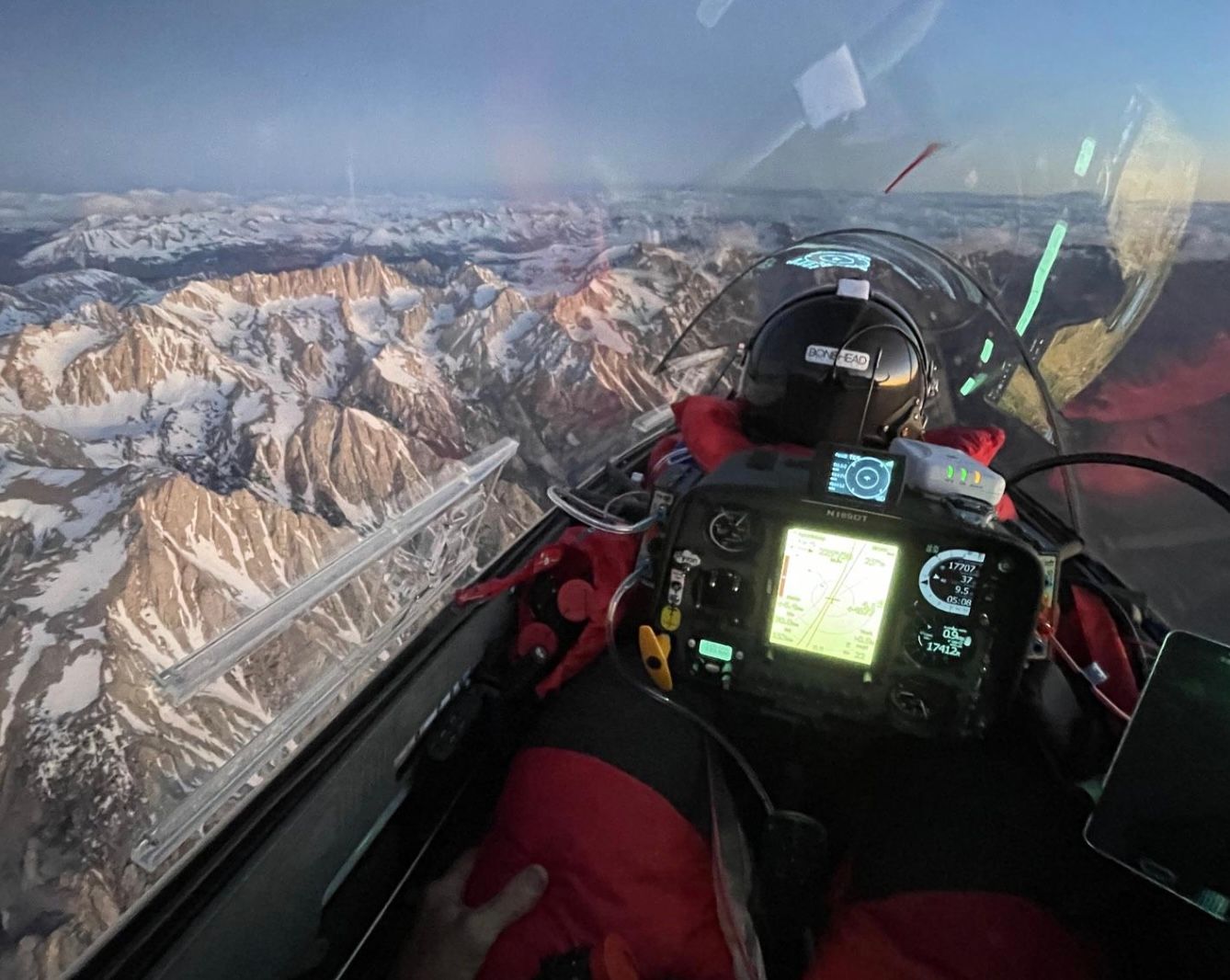
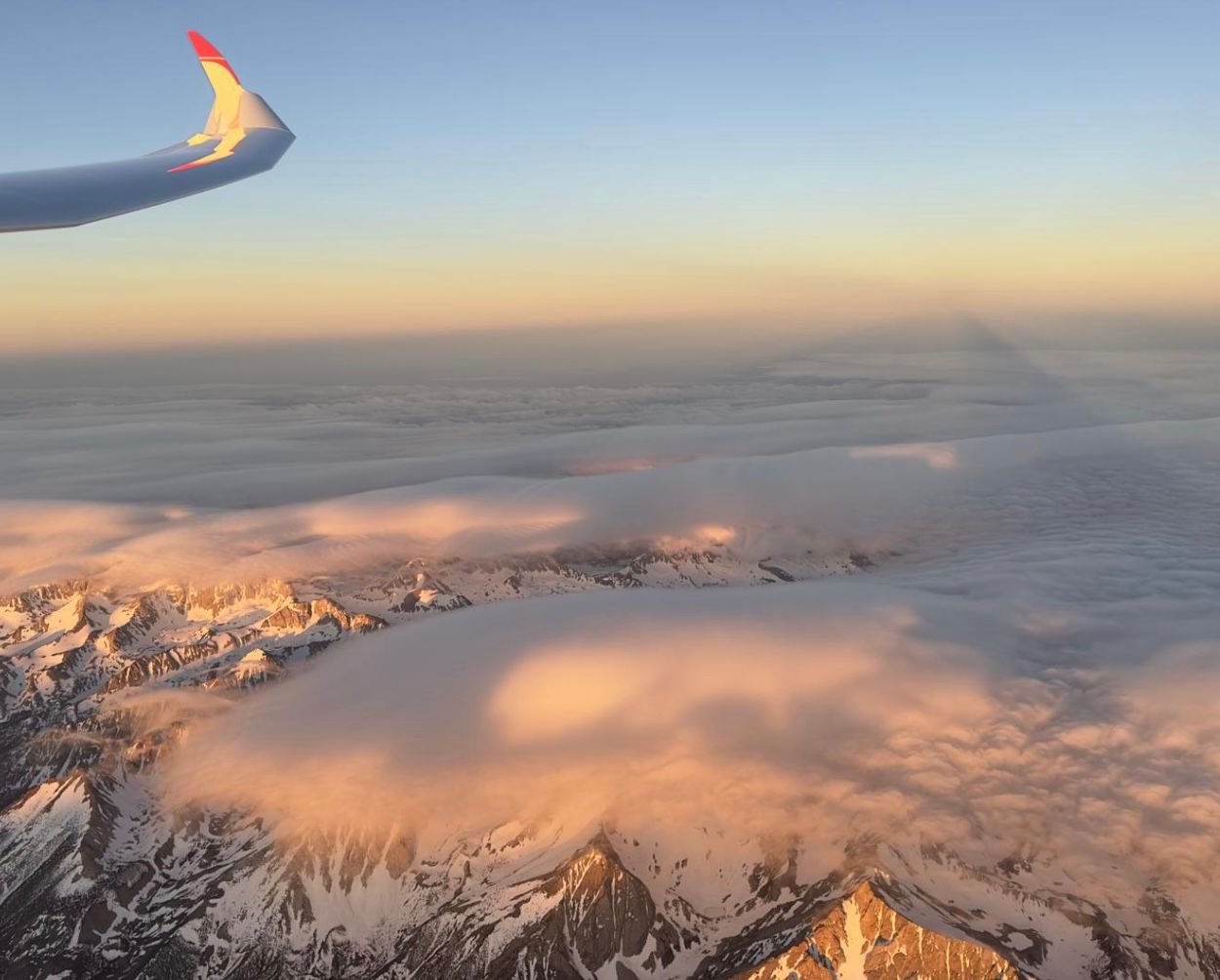
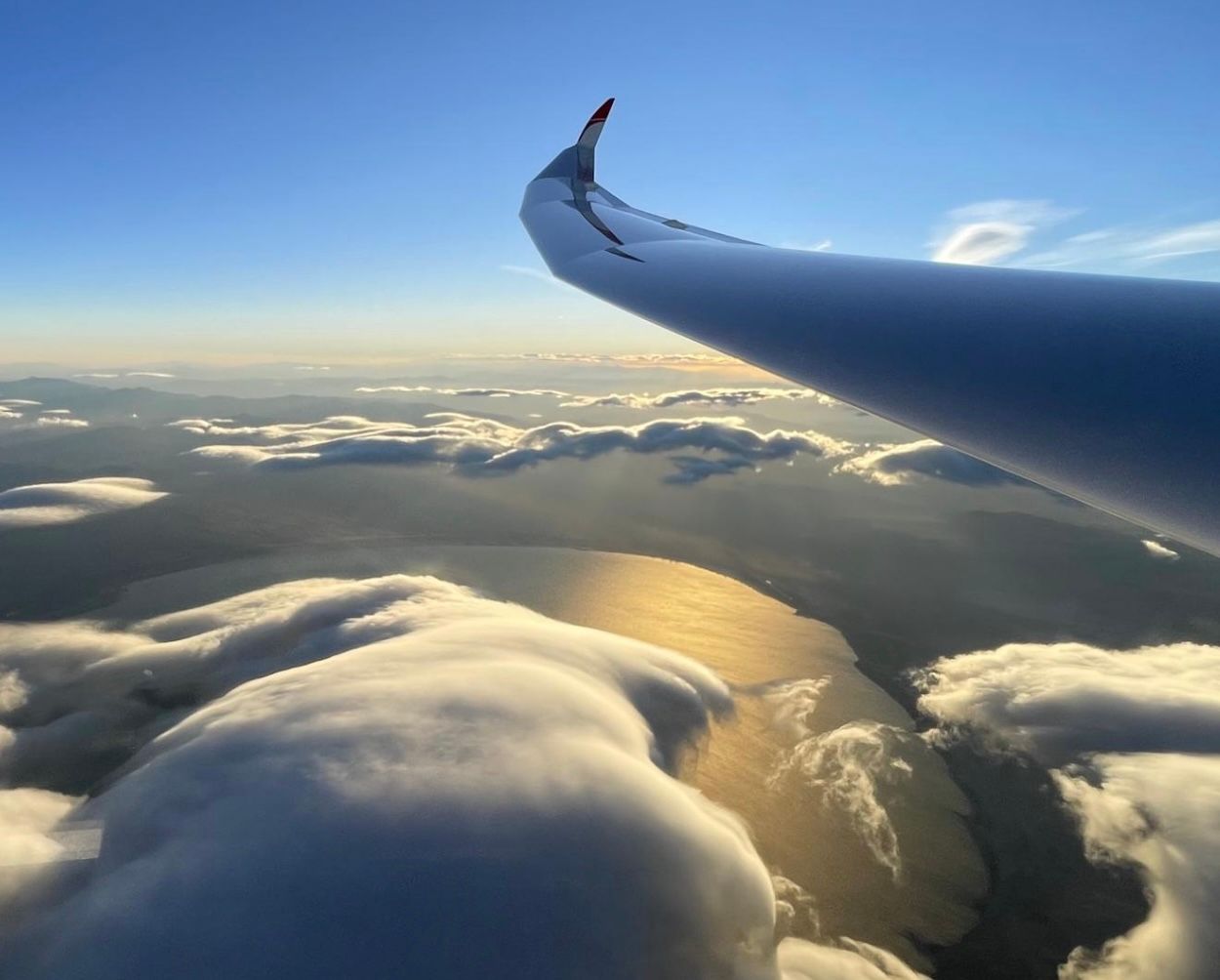
"We both realized that my final leg to the north would have to go way beyond Susanville. The difference between 2500 and 3000km is big and much more difficult. In my mind I thought it would not be possible since there was no wave forecast and far too much moisture north of Susanville for the last few hundred kilometers. The fourth turn was once again made in the Reno area. On my last leg to the south I tried to extend south of Inyokern but Skysight showed too weak and it did not feel like we could maintain altitude (when flying in the Sierra wave in the Owens Valley, getting below 15000' means you're getting pretty low. Because the mountains are so high there, one can experience severe rotor at 16000' and you can be on the ground very quickly, so one must be more conservative there). My last turn point was further north than I liked which meant we had to fly much further north on my last leg into the airmass that had no wave and too much cloud cover. The flight became intense now as I realized it would take all of my concentration and some luck. This is already on a very fatigued mind. When I arrived in the Reno area, I slowed down and flew very conservative. I climbed to my maximum allowed altitude of FL230 and we did some major planning. We determined that Alturas would safely get us beyond 3020 km. The weather there said there were several layers of cloud and an overcast layer. I made my turn toward Alturas looking at solid cloud cover ahead. Knowing I had to descend below a solid cloud cover I headed in the direction of Alturas. I had final glide made but by not much. As I neared the cloud layer I pushed the nose over and got underneath with maybe 100 km to go. I was maneuvering around snow showers and due to the cloud cover the forward visibility was difficult in the direction of Alturas but I did see some sun on the ground ahead. As I got into the sunny area I could see better and made a left turn toward Alturas. As I arrived about 60 km from Alturas airport I was surrounded by solid clouds ahead all around me. There were snow showers and very dark clouds almost to the ground in the direction of Alturas. My distance on the LX read 2988km. I couldn't believe it. My dream of 3000km was smashed because of the clouds. I turned around and flew south for a bit around clouds and then east above high ground on the south end of the mountain range. I had Cedarville airport as a backup in the computer but was below glide. Because of the cloud cover and my low altitude I had to continue east in order to get around the mountain range west of Cedarville. I flew very carefully and cleared the ridge and flew to a rotor that I circled under to gain lift. I still had 50km to Cedarville and my LX distance still said 2988km. Although the clouds in the sky showed no sign of lift, I found lift under a rotor cu that eventually got me high enough to get into laminar wave. I now had Cedarville airport within glide as I flew northbound to Cedarville. The excitement was crazy since I now knew I would accomplish what I never thought I could do this day. We flew over the airport and continued north for a while until the cloud cover and snow showers prevented us from going further. I turned south and flew back to Cedarville airport where we landed after flying 3058km and 17h40min. UNBELIEVABLE FEELING!!!! First I MUST thank Matthew Scutter with SKYSIGHT for providing such an incredible product that was a MASSIVE help in accomplishing this flight. Thanks Matthew!!!! Thanks to my partner in the Arcus, Bruce for joining me in this wild adventure. Bruce has never flown with NVG's before this flight. Thanks to Tim Gardner for all his help and retrieve the next morning with the Cessna. Thanks Bob Trumbly for helping get our glider back home. Thanks to my wife for letting me do this crazy stuff. Thanks to all the Air Traffic controllers that worked with us and were so very patient and helpful. THANK YOU for all of the people that followed the flight and provided encouragement and wonderful comments. WE ARE A TEAM and that's what it takes to achieve these goals."
Vor etwa 20 Jahren, im Januar 2003, gelang Klaus Ohlmann zusammen mit Karl Rabeder der erste 3000 km Flug in den Anden. Ausschschließlich im Tageslicht, in 15 Stunden legten die beiden damals die Strecke zurück. Nach wie vor eine unglaubliche Leistung und der ungebrochene FAI-Rekord in der freien Strecke.
Jedoch sind wir immer wieder begeistert, welchen Einfallsreichtum die Segelfliegergemeinde hat. Gordon hat eine imense Arbeit in die Vorbereitung des Fluges und des Eqipments gesteckt.
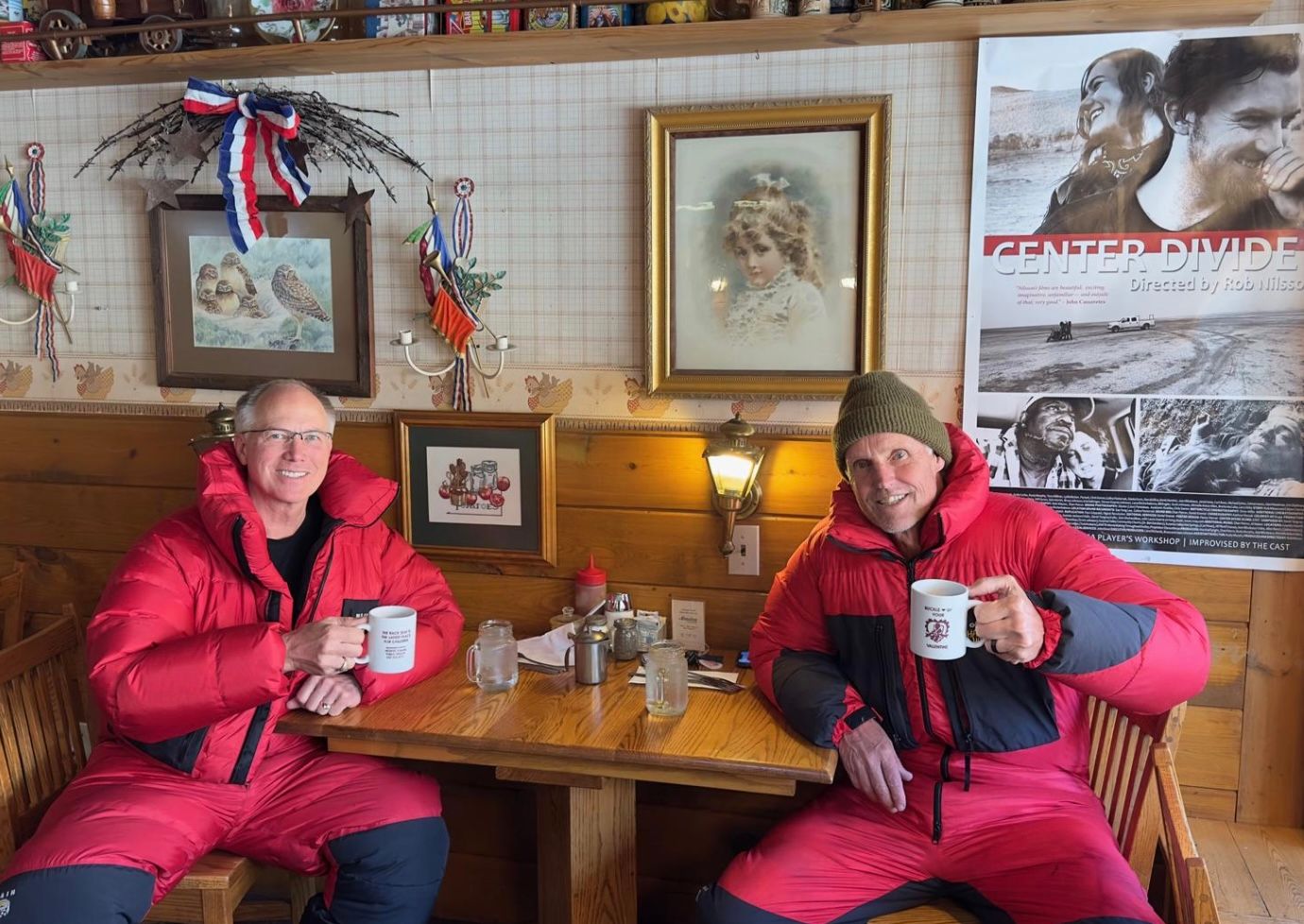
Das gesamte WeGlide Team gratuliert Gordon und Bruce zu dieser absoluten Meisterleistung. Nicht nur wir haben mit euch mitgefiebert, viele Leute weltweit verfolgten den Flug über WeGlide Live. Mittlerweile hat der Flug über 900 Likes auf WeGlide und ist so mit abstand der beliebteste Flug auf der Platform gefolgt von dem Europäischen Europarekord von Klaus Ohlmann. Schaffen wir die 1000 Likes? Drück auf den Button unten und helft dabei!
Haben wir dein Interesse geweckt? Möchtest du mehr über die Technik des Fliegens mit Nachtsichtbrille erfahren? Oder interessiert dich die Geschichte hinter dem Arcus J mit seiner besonderen Ausstattung (es ist nicht der einzige Arcus J, der existiert)? Vielleicht möchtest du auch mehr über Gordon Boettger als Person erfahren? Wenn ja, dann kannst du dich auf die nächste Ausgabe des Segelfliegen Magazines freuen, in der ein ausführlicher Artikel erscheinen wird.
